Over the decades, we’ve stored quite a few boats outdoors with only fabric covers to protect them. Those covers must be supported in some way to prevent sagging lest they create holding ponds for rainwater that will likely end up leaking into the boats. For boats with sailing rigs, we’ve used sprits as ridgepoles, but an elegant solution for boats with or without spars is to spring battens across the beam to arch the cover. The battens are easy enough to make; the challenge is how to securely anchor the ends of the battens on the gunwales. East Passage Boatwrights in Bristol, Rhode Island, has an innovative and beautiful solution: a batten socket that fits into a rowboat’s standard 1⁄2″ oarlock fitting, is easy to use, and doesn’t disrupt a small boat’s classic lines.
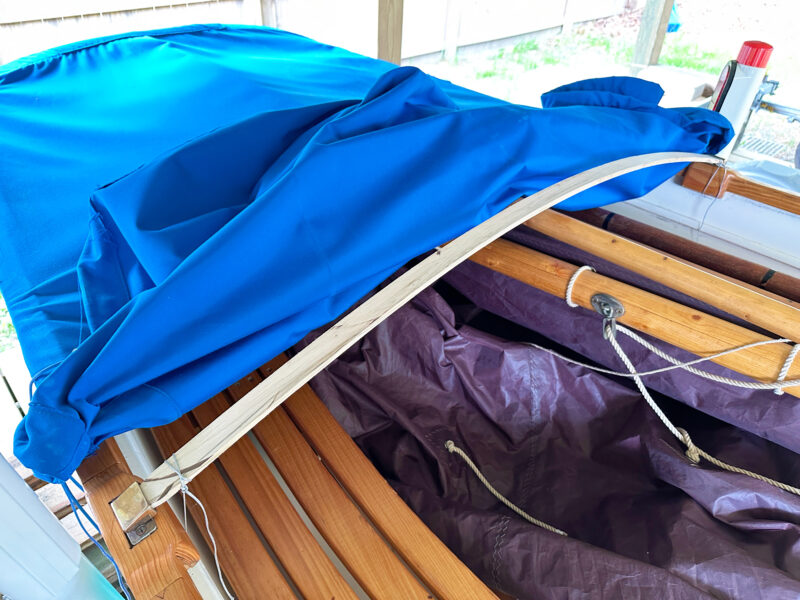
Keeper lines, threaded through a hole in the bottom of the socket’s pin, can be tied off to the boat or, as seen here, back around the batten itself.
The batten sockets are cast in silicon bronze. The pin is 2 1⁄8″ long and has a diameter of 7⁄16″, which makes for a quick and easy fit in a 1⁄2″ oarlock socket. The batten socket’s opening is 3⁄4″ deep, 1 5⁄16″ wide, and 3⁄8″ high.
We cut our battens out of cypress, at 3⁄8″ thick and 1 1⁄8″ wide. Both the inside width and height of the socket’s pocket taper approximately, so we trimmed the batten ends as needed for the best fit. Battens can, of course, be cut wider and thicker to optimize the spring and strength of the wood. The cypress we chose is a light wood and will float with the sockets attached, should they go overboard, to prevent losing the beautiful bronze to Davy Jones’s locker.
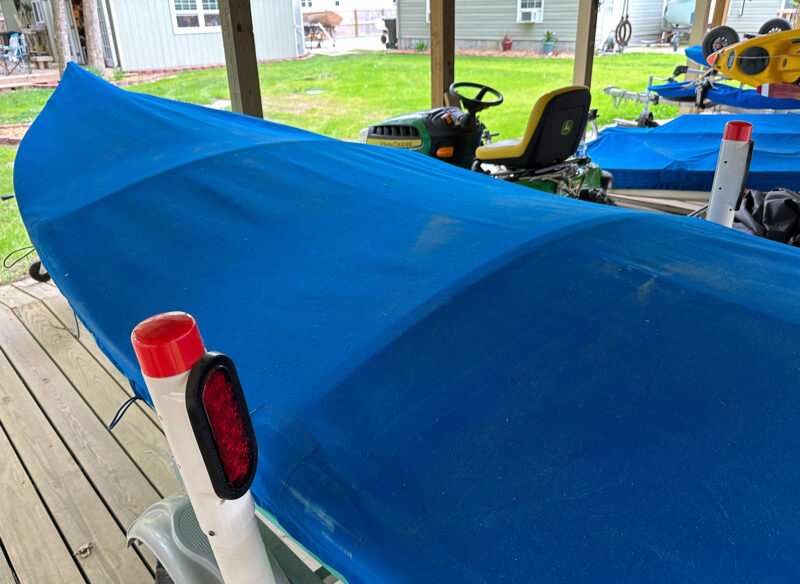
For a boat with two rowing postiions two pairs of batten sockets can be employed to create a well-spaced frame for a boat cover.
The batten socket’s pin has a hole at the base with a strong, thin lanyard already attached to prevent the pin from popping out of the oarlock socket during installation or removal of the cover. Although we tie the lanyards back around the batten, they could be tied to other spots inside of the boat. There are also two versions of the batten socket: one has a small set-screw that can be used to secure the sockets to the batten (which is favorable for boats stored on deck or where there is danger of the hardware taking a swim); the other has no set-screws and should work fine for storage on the hard. We drilled small pilot holes into the batten ends for the set screws to ensure that they would set fully into the batten—any bit of the set screw left protruding from the bottom of the batten socket will prevent full seating of the socket pin into the oarlock socket.
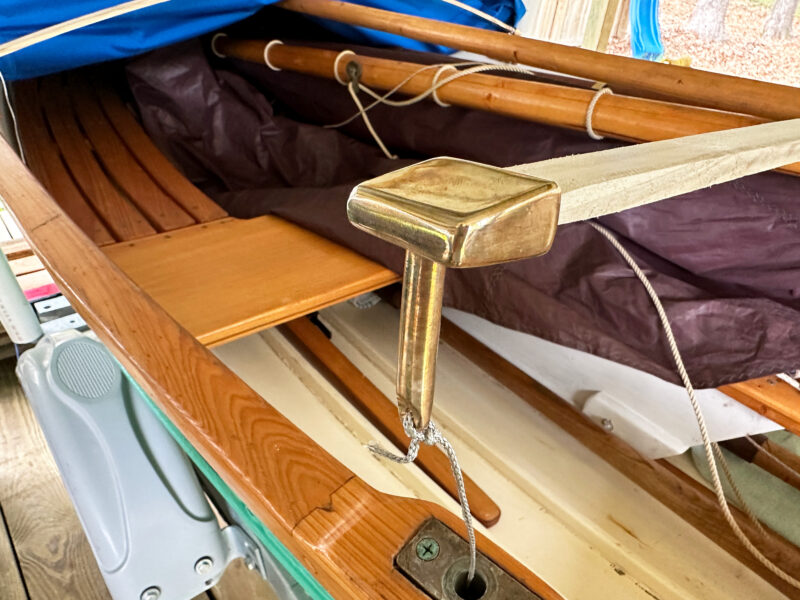 Photographs by the authors
Photographs by the authorsSet up and disassembly could not be easier: the silicon-bronze socket has a 7⁄16″-diameter pin that comfortably fits into a 1⁄2″ oarlock fitting.
Our Penobscot 14 has two rowing stations, so we bought two pairs of batten sockets and cut the battens to appropriate lengths to create a modest 2″ rise for the battens amidships. We rounded all edges of the battens to prevent chafe on the inside of the cover. The batten sockets themselves have smooth, polished edges all around, which minimizes wear on cover materials.![]()
Audrey and Kent Lewis have messed about from coast to coast and are always on the lookout for well-designed boats and beautiful bronze boat bits. Their continuing adventures are logged at their blog, Small Boat Restoration.
Batten Sockets are available from East Passage Boatwrights for $95. Each set includes two sockets with lanyards.
Is there a product that might be useful for boatbuilding, cruising, or shore-side camping that you’d like us to review? Please email your suggestions.
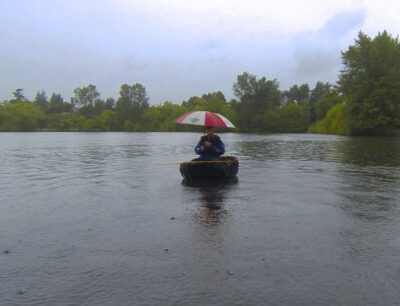
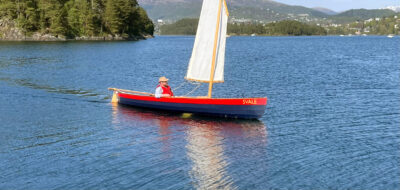

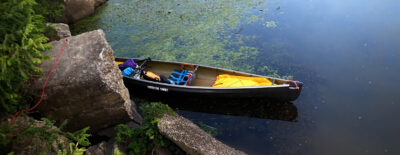
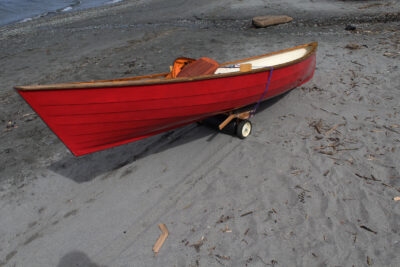
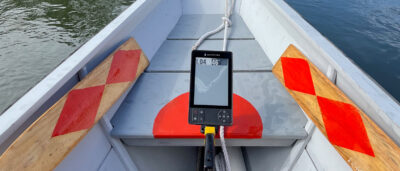
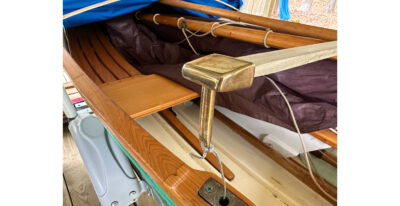
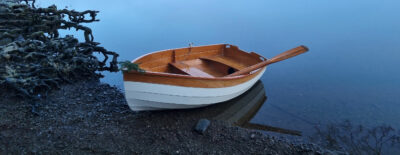

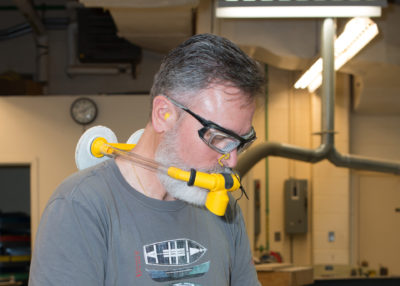
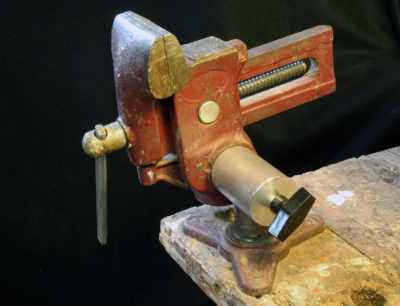
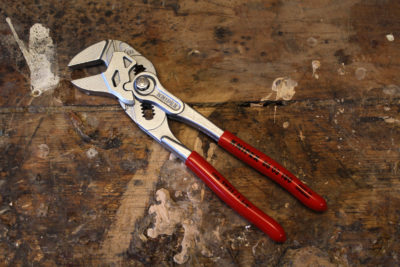
These are pretty nice, solves the problem well. For winter storage where I need to deal with snow, I use 1/2 ID PVC to create Conestoga wagon hoops with a 1/2″ dowel or rod driven into the end. Works great but I’d not want to take it down the road.
For dry storage of my SF Pelican, I made the hoops out of PVC pipe with T fittings at each end. I modified the T fittings by sawing away a portion of the cross piece (as opposed to the vertical leg) so that they would fit snugly down over the the cockpit coaming. I used about 4 of these, as I recall. They seem to hold up well during winter weather. They certainly are low cost. Should be adaptable to any boat with a coaming that protrudes above the deck by an inch or so.